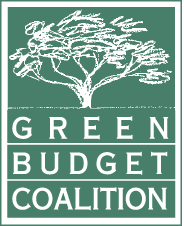Halting and reversing the serious declines in ocean biodiversity and providing certainty among economic sectors dependent on the ocean, will require investments in the establishment of marine protected areas and the development of marine spatial plans.
It is no coincidence that the commitment to develop participatory, integrated and biodiversity inclusive spatial plans is the focus of the first target of the Global Biodiversity framework. MSP can provide foundational support to meeting the GBFs other targets in the marine environment, both with regards to halting and reversing biodiversity loss and ensuring the equitable sharing of the benefits and services that healthy ecosystems provide.
For MSP to be successful requires the investment of adequate funding, as well as setting objectives that are aligned with the goals of the GBF to provide decision makers with clear guidance on setting priorities and making trade-offs. Alignment of MSP with the GBF means that the development of conservation area networks must be the first priority in any spatial planning initiatives, as a healthy ocean is the very foundation of a thriving blue economy.
Marine spatial planning is an inclusive, comprehensive, and strategic approach to the use and management of ocean space and marine resources while protecting ecosystems, ensuring sustainability, and reducing overlap and conflicts between uses. MSP optimizes societal benefits from human activities while at the same time providing long-term protection of nature. MSP is a process that is being used by countries around the world.
MSP requires new governance arrangements that bring together various levels of government, including Indigenous governments, and the variety of stakeholders with an interest in the ocean region. The success of MSP hinges on a participatory approach and comprehensive governance. New governance arrangements, particularly with Indigenous peoples, is a critical component of successful MSP, and will require capacity support and ongoing funding. Building relationships and ensuring effective Indigenous and stakeholder engagement requires funding certainty that cannot be met with short term budget commitments.
The Government of Canada is currently proceeding with MSP in five regions, including: Southern BC; Newfoundland and Labrador Shelves; Estuary and Gulf of Saint Lawrence; Scotian Shelf and Bay of Fundy; and the Pacific North Coast. First generation plans or frameworks for the five regions are to be completed in 2024, but ongoing funding is required to continue collaborative processes, and support implementation and consultation in the development of full marine spatial plans, and to begin MSP in Canada’s remaining eight regions.
The original investment for MSP was made in 2018 with a one-year extension in 2023.
Recommended Investment:
$75 million over five years, then $15 million per year, ongoing [DFO, ECCC, PC, NRCan, TC]
